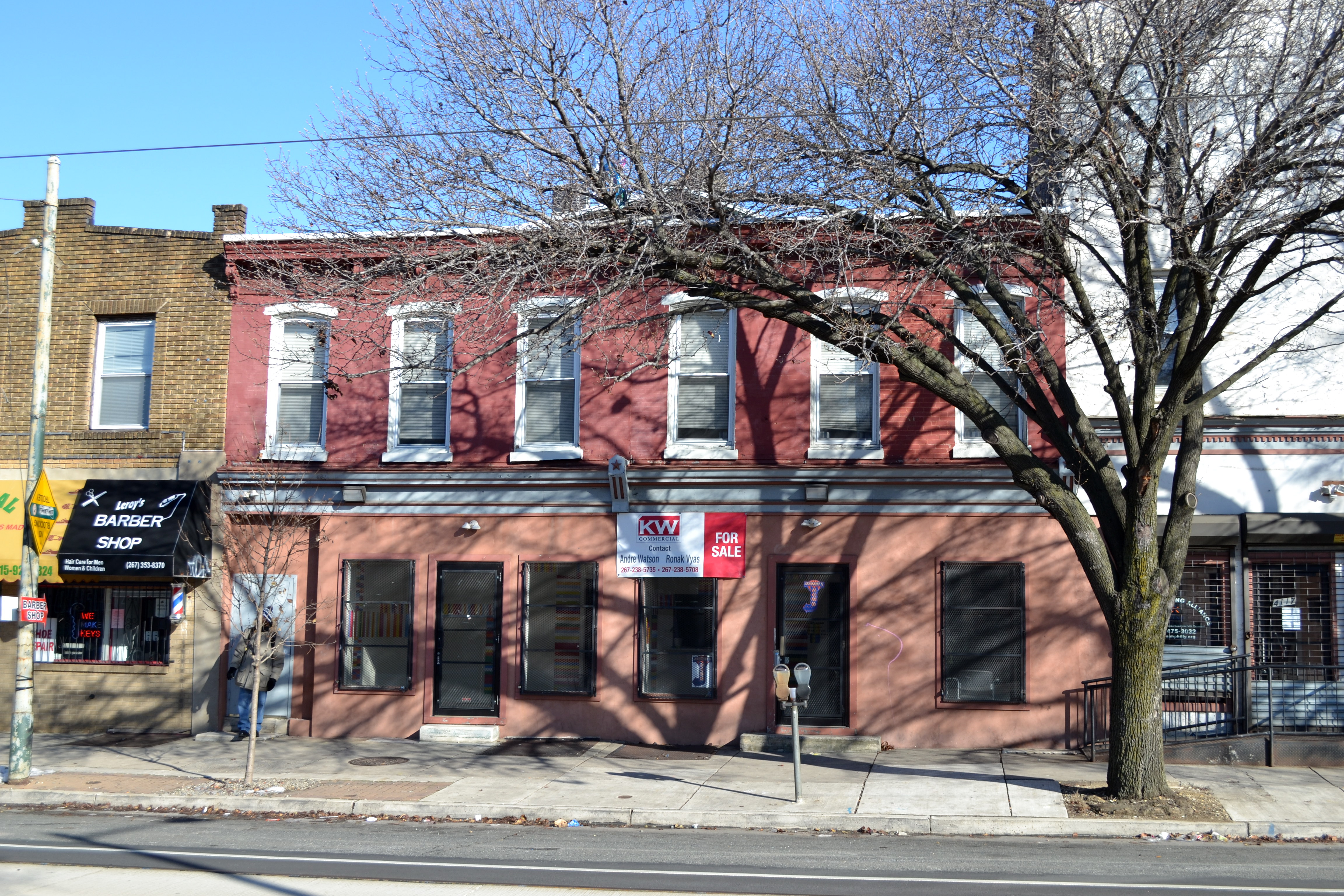Checking in on the Kenney administration’s commercial corridor plans

Philadelphia has around 265 commercial corridors, according to Commerce Department Director Harold Epps, but the Department’s programs are only reaching about a quarter of them.
Speaking at a Greater Philadelphia Chamber of Commerce ‘Roadmap for Growth’ forum last week, Epps said the Commerce Department currently supports about 80 commercial corridors and 20 community development corporations (CDCs), but with the administration making an explicit priority of directing more development resources to neighborhood commercial corridors outside of Center City, he hopes to be able to reach far more than that.
The Commerce Department administers numerous programs and services targeted at commercial corridors including the Storefront Improvement Program, funding for commercial corridor staff at neighborhood Community Development Corporations, streetscape beautification and cleaning, assistance with starting business improvement districts, and various types of planning and technical assistance for businesses.
Just over 100 days into office, the Kenney administration hasn’t spelled out many specific new agenda items for commercial corridors beyond increasing resources for existing programs. Kenney has said he wants to hire more corridor managers, and increase funding for sidewalk cleaning and security cameras.
“We’re going in the right direction, but we need to go faster,” Epps said, summarizing the administration’s thinking.
One area of great interest to the administration is raising awareness of the CDC tax credit program, where businesses with an annual Business Income and Receipts Tax liability of $100,000 or more have the option of donating up to $100,000 a year to a CDC for ten years.
Many CDCs have a hard time finding partner businesses, Epps explained, and the city would like to play a better matchmaker.
Before making specific new recommendations, Epps will finish a listening tour, visiting various commercial corridors throughout the city to gather feedback from businesses and corridor staff about changes that could help them. So far he has visited eight neighborhood corridors, and plans to visit 12 more.
Epps says he’s looking for answers to three questions: “How can we revitalize the commercial corridors to stimulate neighborhoods? How can we support immigrant businesses so they will thrive and create jobs? What are innovative strategies to support economic opportunity for all Philadelphians?”
The Chamber event recruited a panel of heavy hitters from the finance and community development worlds to speak to these issues, including John Grady of Philadelphia Industrial Development Corporation (PIDC), Manuel Portillo of the Welcoming Center for New Pennsylvanians, Matt Bergheiser of University City District, Mike Innocenzo of PECO, and Evelyn Smalls of United Bank.
Much of the discussion centered on themes that advocates for small businesses frequently gravitate toward: better information about financing and city business assistance programs, streamlined permitting, more consideration of the costs of regulatory compliance, and support for scaling growing companies.
More interesting were some of the Philadelphia-specific issues that panelists thought needed to be addressed alongside corridor revitalization.
“The health of the retail corridors is often a proxy for the health of the neighborhood economies,” said Matthew Bergheiser of University City District, “but in a city where thousands of people are disconnected from the economic mainstream I would argue that’s not enough. Philadelphia has pockets of economic prosperity and swathes of disconnection.”
Bergheiser said that every neighborhood corridor needs to start with a foundation of clean, safe, and attractive, but higher-capacity organizations should look to invest in people as well as places, by pairing those efforts with local workforce development programs.
He touted the success of UCD’s West Philadelphia Skills Initiative program, which helps connect underemployed nearby residents with job opportunities at large University City employers. Bergheiser touted a 91% placement rate, which is impressive given that program participants have been unemployed for an average of 410 days upon enrollment.
Other specific ideas panelists suggested included supporting community health facilities as corridor anchors; investing in community engagement and bilingual corridor managers in areas with large concentrations of immigrant businesses; and a one-stop, user-friendly portal for businesses looking to satisfy their various obligations to the city.
Harold Epps confirmed that Commerce, Licenses & Inspections, Water and other departments are presently working on such a one-stop shop, and the corridor listening tour is an important part of this effort.
Audience members also came with their own ideas.
Della Clark, President of the Enterprise Center, recommended creating Keystone Opportunity Zone-type districts for neighborhood commercial corridors, where business and property taxes would be waived for some period of time, and converting CDFI funding from a reimbursement to a guarantee.
Jabari Jones, executive director of the West Philadelphia Corridor Collaborative, suggested the city could do a better job of making businesses aware of new regulations, or procurement and contracting opportunities. More resources for business association capacity-building could help, he said, as these associations typically have more time and inclination to monitor that type of information than individual business owners do.
Interestingly, the question of appropriate zoning for commercial corridors does not appear to have factored into the Kenney administration’s thinking thus far, despite the direct relevance of zoning policy for encouraging clusters of storefronts.
Epps referred a question from PlanPhilly about the administration’s views on ideal zoning for commercial corridors to PIDC’s John Grady, who said this would vary greatly by neighborhood.
“I do think that under the current zoning code, as areas get remapped, there’s particular attention to providing for CMX type zoning that allows for the mixing of commercial and residential uses, with apartments upstairs and retail downstairs,” he said, while acknowledging that market dynamics can sometimes militate against ground-floor commercial uses.
Karen Fegley, Deputy Director at Commerce, added that the Commerce Department tries to target incentives and services to those blocks where the corridors are strongest.
“It’s about trying to strengthen the businesses where they’re condensed in a small area, where we can then build up residential around it,” she said.
The political commitment to using zoning to support corridors also tends to vary from place to place.
The zoning for Fairmount and Girard Avenues has been updated, which has encouraged some of the mixed-use developments currently in progress there. Council President Darrell Clarke, who represents this district, has recently become interested in making some revisions that would instead reduce allowable density along those corridors.
Kevin Moran of Fairmount CDC told PlanPhilly that the Fairmount and Girard Avenue corridors can only benefit from additional residents in the nearby neighborhoods, and said the organization has been supportive of denser zoning on and off the corridor.
“We’ve talked to the Councilman and the Planning Commission and aired our concerns about the Brewerytown rezoning, and what it means for future development, access to transit, and advocating for increased transit access,” said Moran.
He credits newer developments for helping support more foot traffic in the area, and establishing a more stable neighborhood business climate.
There’s no shortage of ideas for policies and programs the Kenney administration might try, but Epps reminded the audience that there’s one proven strategy for helping neighborhood businesses that everyone can do in the meantime.
“Go out into the neighborhoods and spend some of your money,” he said, “Believe me, your spending would be greatly appreciated by the people in those neighborhoods”
WHYY is your source for fact-based, in-depth journalism and information. As a nonprofit organization, we rely on financial support from readers like you. Please give today.






